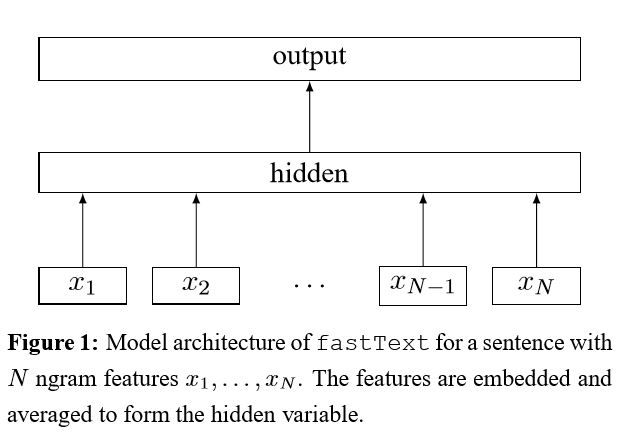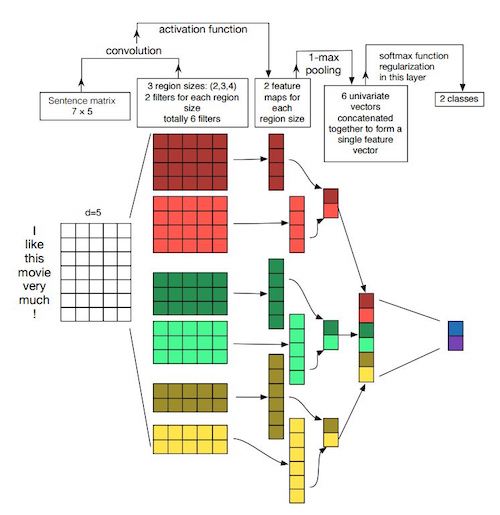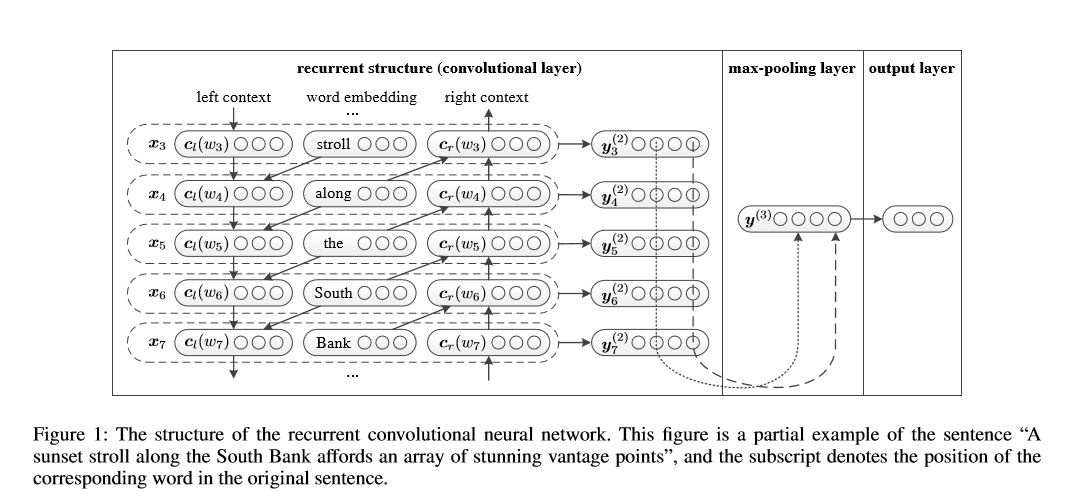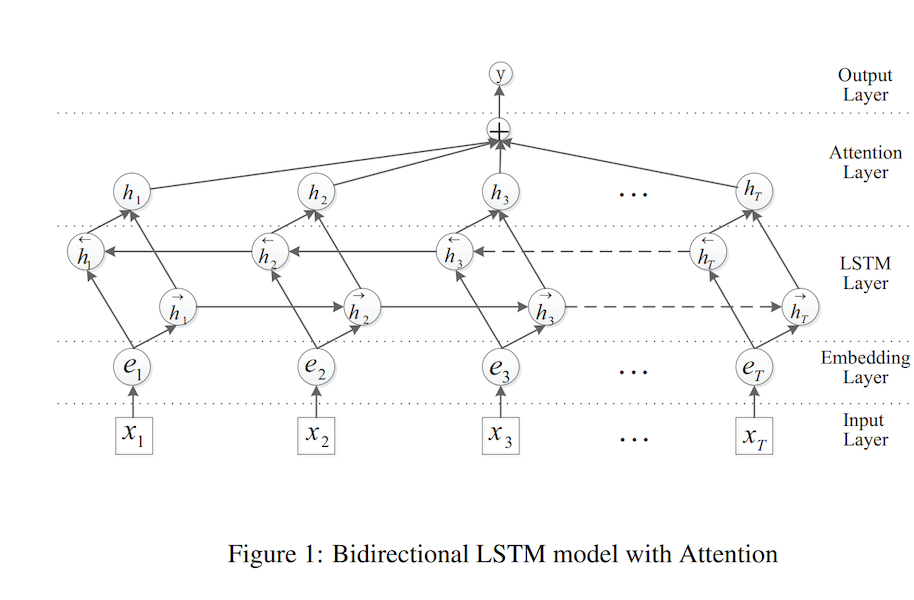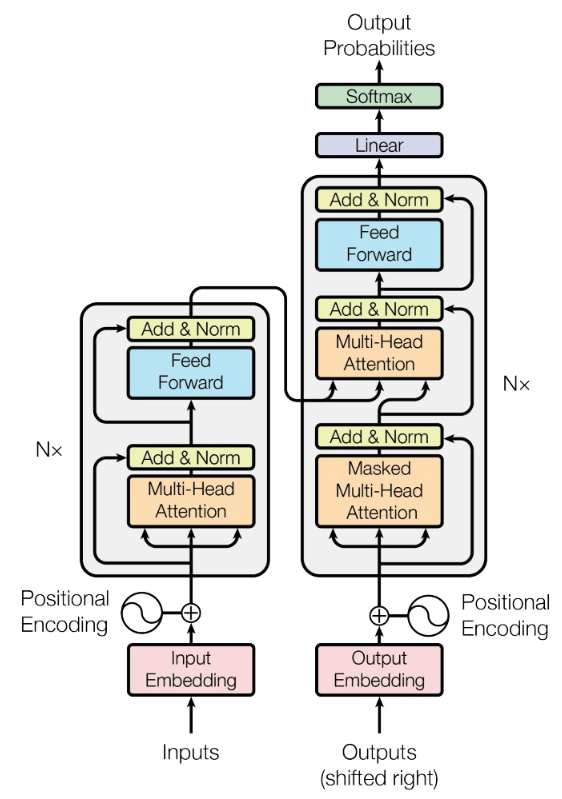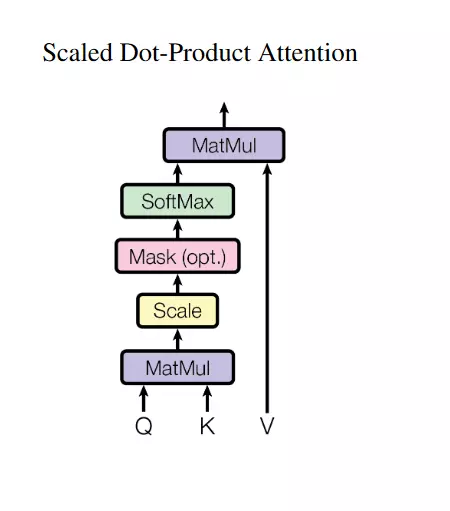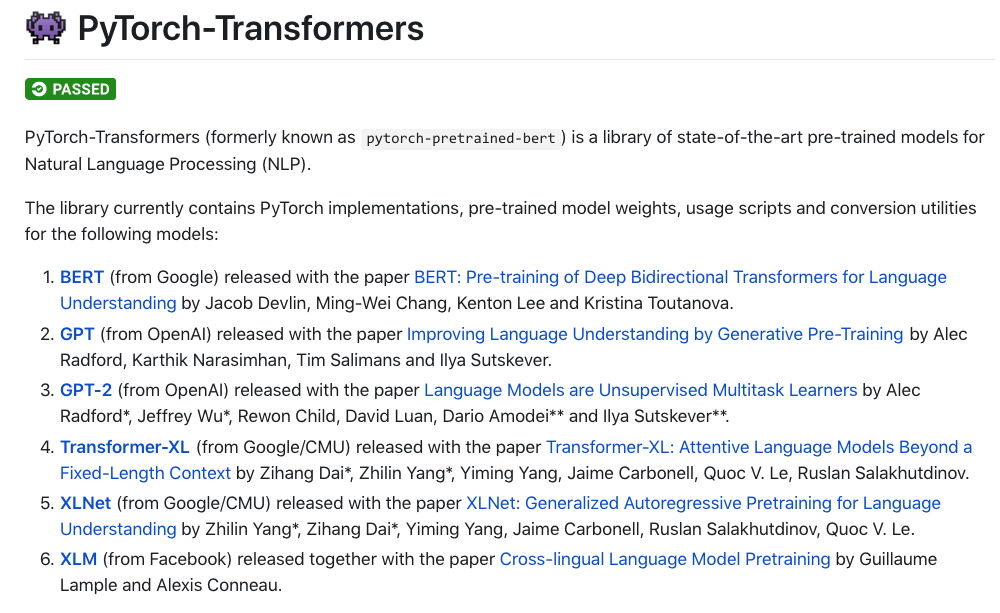[TOC]
基于pytorch实现的中文文本分类
python 3.7
pytorch 1.1
tensorboardx
numpy
torchvision
torchtext
pytorch-pretrained-BERT: pip install pytorch-pretrained-bert
数据集: 搜狗实验室新闻数据集
embedding: https://github.com/Embedding/Chinese-Word-Vectors
这里使用以字为单位的300维 词向量:(Sogou News 搜狗新闻)
python main.py --model FastText / TextCNN / TextRNN / TextRCNN / TextRNN_Att
Bert:
python main_bert.py --model Bert
效果:RTX2070上训练数据
| model | precision | recall | f1-score | 训练时间 |
|---|---|---|---|---|
| FastText | 0.9238 | 0.9237 | 0.9236 | 0:06:02 |
| TextCNN | 0.9110 | 0.9108 | 0.9108 | 0:03:11 |
| TextRNN | 0.9057 | 0.9045 | 0.9047 | 0:01:51 |
| TextRCNN | 0.9135 | 0.9129 | 0.9129 | 0:03:10 |
| TextRNN_Att | 0.9205 | 0.9204 | 0.9203 | 0:05:53 |
| Transformer | 0.8955 | 0.8944 | 0.8943 | 0:10:27 |
| Bert | 0.9412 | 0.9411 | 0.9410 | 0:45:13 |
论文: Bag of Tricks for Efficient Text Classification
结构:
embedding + bi_gram + tri_gram --> 拼接 -->fc (fc1 --> fc2) --> softmax
https://www.jianshu.com/p/48dd04212f48 对于普通 word2vec,输入层就是一个词向量的查找表,所以它的大小为 nwords 行,dim 列(dim 为词向量的长度),但是 fastText 用了 word n-gram 作为输入,所以输入矩阵的大小为 (nwords + ngram 种类) * dim。代码中,所有 word n-gram 都被 hash 到固定数目的 bucket 中,所以输入矩阵的大小为 (nwords + bucket 个数) * dim.
词向量的个数是单词的数量加上桶的个数。多个ngram或是字符ngram会在一个桶**享一个向量
作者:骑鲸公子_ 链接:https://www.jianshu.com/p/48dd04212f48 来源:简书 著作权归作者所有。商业转载请联系作者获得授权,非商业转载请注明出处。
论文 :Convolutional Neural Networks for Sentence Classification
结构:
embedding --> conv(1维) --> max pooling -->full connected layer --> soft_max
论文 :Recurrent Neural Network for Text Classification with Multi-Task Learning
结构:
embedding --> bi-lstm --> 拼接 --> average --> softmax
论文:Recurrent Convolutional Neural Network for Text Classification
结构:
recurrent structure (convolutional layer) --> max pooling --> fc --> softmax
RNN 融合了左右上下文信息:
[left_side_context_vector,current_word_embedding,right_side_context_vecotor]
论文:Hierarchical Attention Networks for Document Classification
结构:
1、embedding
2、word encoder
3、word attention
4、sentence encoder
5、sentence attention
6、fc
7、softmax
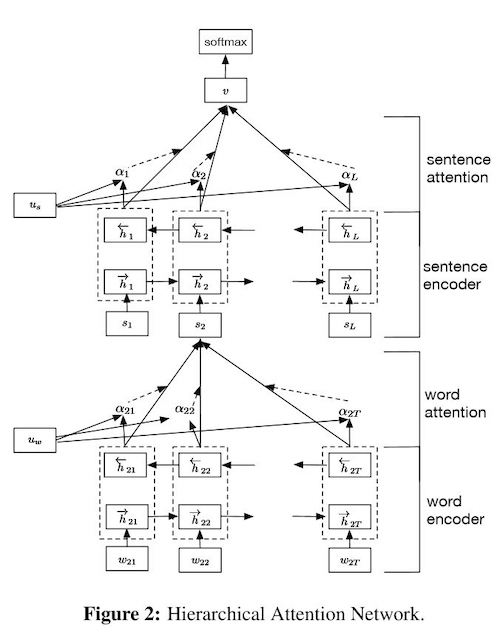 参考:Hierarchical Attention Network for Document Classification阅读笔记
参考:Hierarchical Attention Network for Document Classification阅读笔记
论文:Attention-Based Bidirectional Long Short-Term Memory Networks for Relation Classification
论文解读:https://blog.csdn.net/qq_36426650/article/details/88207917
github: https://github.com/SeoSangwoo/Attention-Based-BiLSTM-relation-extraction
结构:
输入层 -->embedding --> BiLSTM --> attention层 --> 输出层
论文:Attention Is All You Need
1、Attention机制详解(二)——Self-Attention与Transformer
3、详解Transformer (Attention Is All You Need) 《Attention is All You Need》浅读(简介+代码)
结构:
1、embedding
2、positional_Encoding
3、Encoder
3.1、Multi_Head_Attention
Scaled_Dot_Product_Attention
3.2、Position_wise_Feed_Forward
transforer 是经典的Encoder-Decoder架构
这里讲bert单独拎出来。
pip install pytorch-transformers
https://github.com/huggingface/pytorch-transformers
更多的预训练model 看github:
https://github.com/huggingface/pytorch-transformers
使用bert时,需要深入理解nlp预训练的发展。
- 预训练需要学习一个语言模型,对文本进行抽象
- 语言模型的表征能力,需要语境和语义信息(动态、多义)
预训练的发展:
1、word2vec (glove、 fasttext)
2、Elmo(Lstm 双向)
3、GPT(Transformer 单向)
4、Bert(双向Transformer + mask)
5、ERINE
6、XLNet(Transformer-XL, 归纳了AR:AutoRegression AE:AutoEncoding 两种语言模型的长处)
ELMO: 双向LSTM,输出3个向量: 预训练词向量、句法特征、语义特征,下游使用时可以直接使用三个向量做拼接使用
GPT: 首次使用Transformer代替 RNN作为特征抽取器(GPT中只是使用了单向的特征提取)。 训练输出可以随着下游 fine-tune
Bert:
1、使用Transformer作为特征抽取器(双向)
2、使用Mask Language Model(MLM)和 Next Sentence Prediction(NSP)的多任务目标
15%的word被随机mask掉:训练中对这15%的词,以80%的概率直接mask,
10%概率替换成其他任意单词,10%概率保留原来的token。 这样迫使Transformer学习到word的上下文信息。
(原因:如果某个单词被100%概率mask,在fine-tune时就看不到这个词,加入随机token, 可以让Transformer保持对每个输入token的分布式表征,否则在self-attention中,上一层就能记住这个呗mask的token,
一个单词最终被随机替换的概率是 15% * 10% =1.5% 负面影响可以忽略不计)
XLNET:TODO
1、文本分类model:
- FastText: Bag of Tricks for Efficient Text Classification
- TextCNN: Convolutional Neural Networks for Sentence Classification
- Implementing a CNN for Text Classification in TensorFlow
- char_TextCNN: Character-level Convolutional Networks for Text Classification
- TextRNN: Recurrent Neural Network for Text Classification with Multi-Task Learning
- HAN(textRNN + attention): Hierarchical Attention Networks for Document Classification
- Att-BiLSTM:Attention-Based Bidirectional Long Short-Term Memory Networks for Relation Classification
- TextRCNN(TextRNN+CNN): Recurrent Convolutional Neural Networks for Text Classification
- 知乎--用深度学习(CNN RNN Attention)解决大规模文本分类问题 - 综述和实践
2、预训练
-
ULMFiT--Universal Language Model Fine-tuning for Text Classification
-
GPT--Improving Language Understanding by Generative Pre-Training
-
Transformer: Attention Is All You Need
-
BERT--Pre-training of Deep Bidirectional Transformers for Language Understanding
-
transformer-XL:
-
XLNet XLNet: Generalized Autoregressive Pretraining for Language Understanding
-
ERINE 2.0 https://github.com/PaddlePaddle/ERNIE/blob/develop/README.zh.md
注意力:
- text-classification-cnn-rnn tensorflow实现的字符级textCnn RNN
- text_classification-- brightmart tensorflow实现的各种版本文本分类model,知乎看山杯比赛的数据集
- https://github.com/Magic-Bubble/Zhihu 基于pytorch实现的实现的各类文本分类model
- https://github.com/649453932/Chinese-Text-Classification-Pytorch
中文pytorch实现的文本分类 - https://github.com/songyingxin/TextClassification-Pytorch
词向量下载
- pytorch加载bert ERINE等: https://github.com/huggingface/pytorch-transformers
- ERINE 转换未pythorch 加载的bert格式:https://github.com/nghuyong/ERNIE-Pytorch
- bert:https://github.com/google-research/bert
